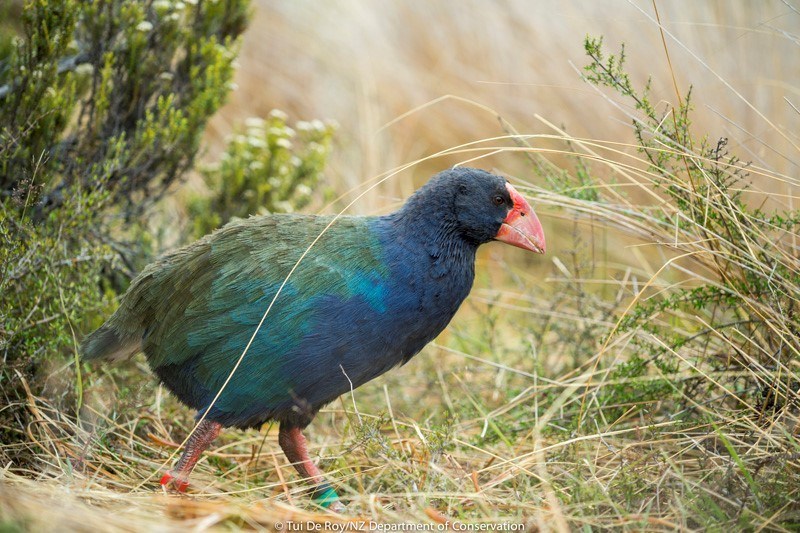
Christchurch – Department of Conservation’s takahē recovery programme is seeing some significant wins.
Annual growth rates are at least 10 percent a year, as genetic management is reducing the level of inbreeding and establishing further wild sites.
But DoC staff we still have a lot of mahi (work) to do before they can say they have reached full takahē recovery. The population has climbed to more than 400.
Breeding pair numbers have more than doubled in the past six years, from 66 in 2013 to 130 two years ago.
Department of Conservation’s takahē team match pairs based on birds’ rarity and relatedness, to optimise genetic diversity and breeding productivity which is critical to pushing takahē away from extinction.
Takahē were released into Kahurangi National Park’s Heaphy Track area two years ago to attempt to establish a second wild population outside of the Murchison Mountains.
It was one major step towards the long-term goal of securing self-sustaining populations in areas of their former natural range.”
The Kahurangi population has grown and now has more than 40 birds. About two-thirds of the Aotearoa takahē population is spread across 18 secure island and mainland sanctuaries.
It is a rare relict of the flightless, vegetarian bird fauna which once ranged New Zealand. Four specimens were collected from Fiordland between 1849 and 1898.
They were was considered extinct by the end of the 19th century until two were rediscovered in Fiordland’s Murchison mountains above Lake Te Anau 73 years ago. They are were nationally classified as critical now nationally vulnerable.
Extensive stoat trapping networks are maintained to help protect the wild populations in Fiordland and Kahurangi National Park. Last year three takahē were found dead after aerial predator control in the park. Toxicology tests found they probably died from 1080 toxin.



